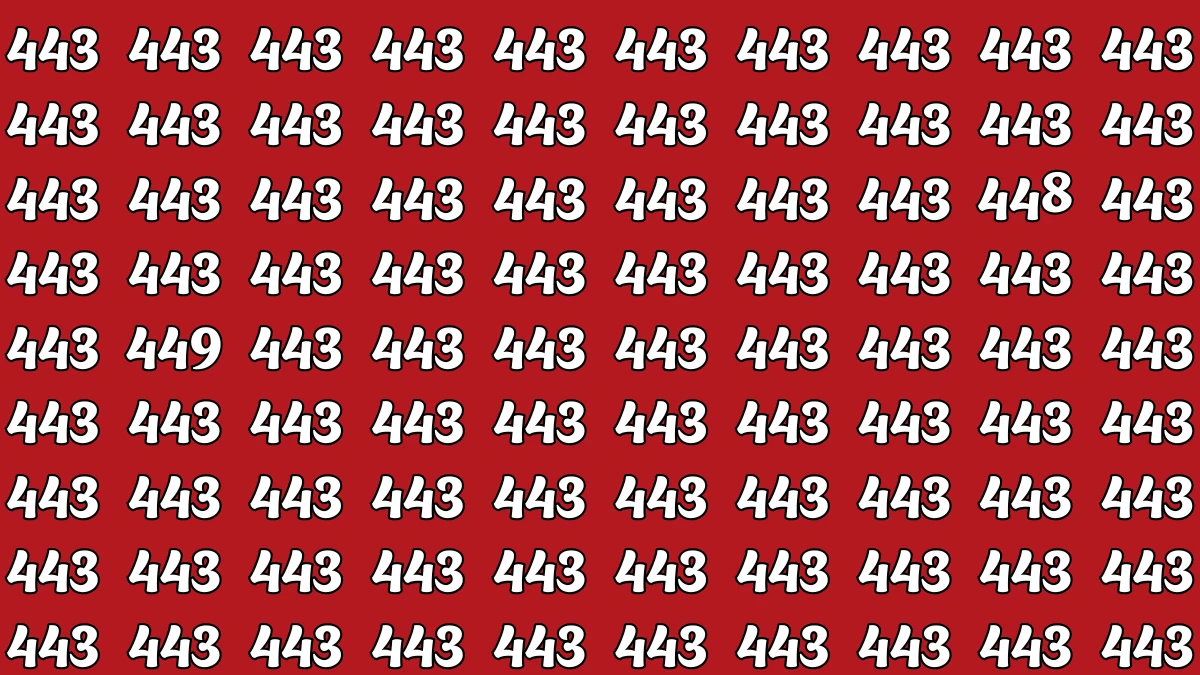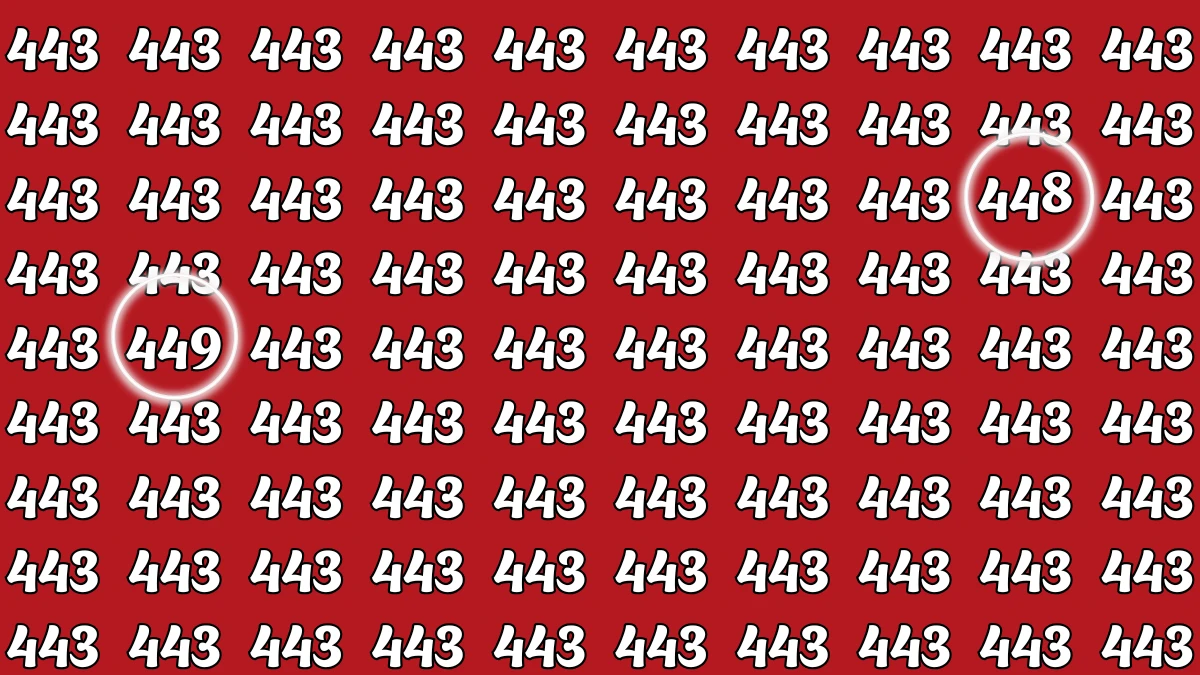Optical Illusion
An optical illusion is a visual phenomenon where what you perceive with your eyes differs from reality or the actual physical properties of the object.
It occurs because the brain interprets visual information in ways that may be misleading or cause you to see something that isn’t there or see it differently than it really is.
Optical illusions can be created by manipulating light, shapes, colors, and patterns to trick the brain into making incorrect or distorted interpretations of what is being seen.
Optical Illusion: Within 6 Seconds Spot The Number 448 and 449 among 443
Optical illusions play tricks on our vision, making it challenging to differentiate similar patterns at a glance. In this illusion, the numbers 448 and 449 are cleverly hidden among multiple instances of 443, creating a visual distraction.
Due to the similarity in digit structure, your brain may automatically group them together, making it difficult to spot the odd ones out. To successfully find 448 and 449 within 6 seconds, focus on scanning the image systematically rather than randomly.
Observing small differences in the middle or last digits can help in identifying them more quickly. This challenge not only tests your observation skills but also sharpens your attention to detail and visual processing speed. Try it now and see if you can spot them in time!

Optical Illusion: Within 6 Seconds Spot The Number 448 and 449 among 443 - Solution
To solve the optical illusion puzzle, where you are tasked with spotting the numbers 448 and 449 within a grid of numbers, start by focusing on the given coordinates. Number 448 is located in the 3rd row and 9th column from left to right, while 449 is in the 5th row and 2nd column from left to right.
Quickly scanning the grid, begin by identifying the number 448, which will be toward the right side in the third row.
Then, locate 449, which will be near the top left of the grid in the second column of the fifth row. Both numbers may blend in with the surrounding 443s, so it’s essential to maintain a quick scanning pattern to spot them within the 6-second time limit.






